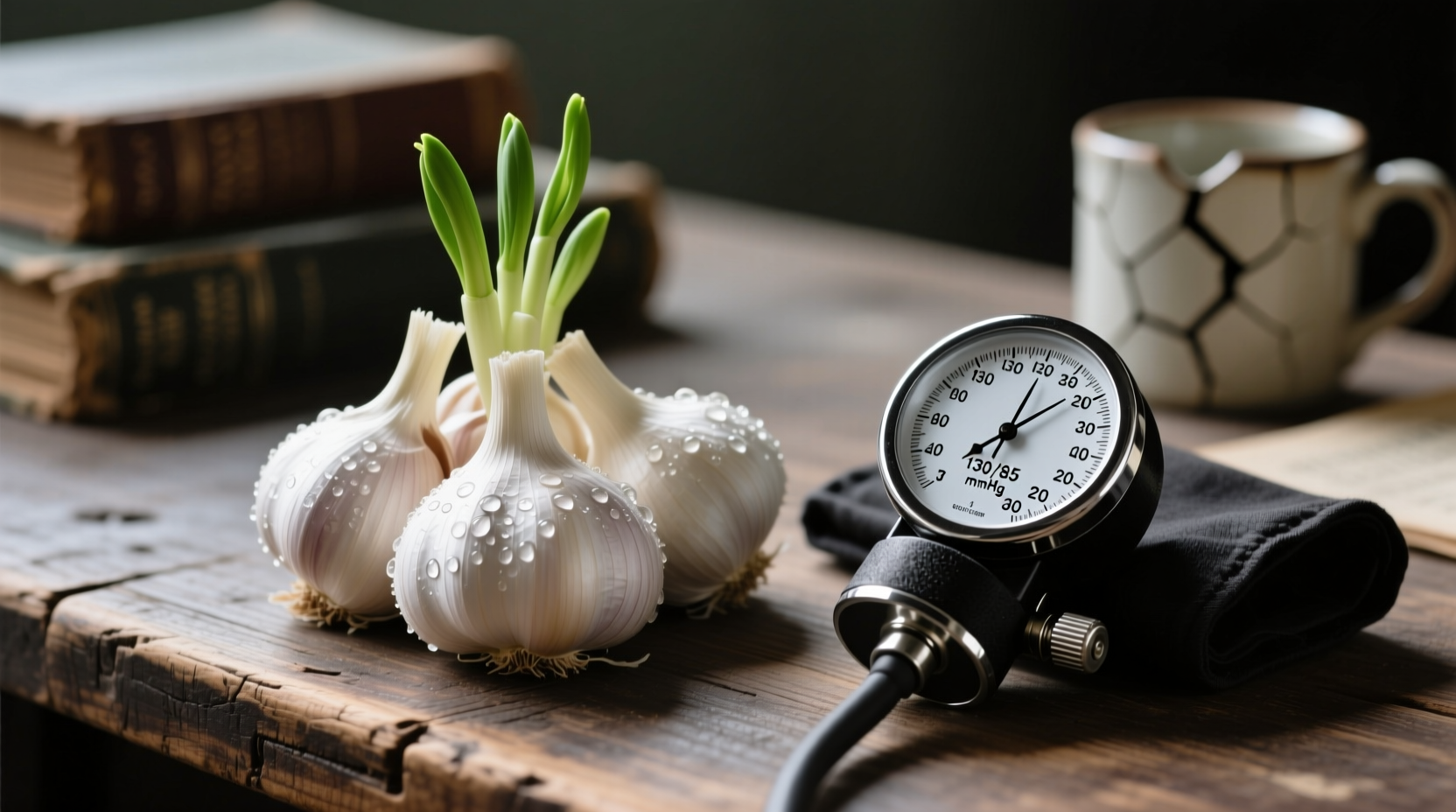High blood pressure affects nearly half of adults worldwide, driving many to explore natural approaches alongside conventional treatment. Garlic has emerged as one of the most researched culinary remedies, with centuries of traditional use now backed by modern science. Understanding exactly how garlic interacts with blood pressure—and what limitations exist—is crucial for making informed decisions about your health.
The Active Compounds Behind Garlic's Potential Benefits
When you crush or chop fresh garlic, an enzyme called alliinase converts alliin into allicin—the compound responsible for garlic's distinctive aroma and many health properties. Allicin then breaks down into other sulfur-containing compounds that appear to influence blood pressure through multiple mechanisms:
- Stimulating nitric oxide production, which helps blood vessels relax
- Exhibiting mild ACE-inhibiting properties similar to some blood pressure medications
- Reducing oxidative stress that contributes to vascular stiffness
- Improving endothelial function in blood vessels
These biological actions form the scientific basis for garlic's potential blood pressure effects, though the magnitude varies significantly based on preparation method and individual factors.

What Scientific Research Actually Shows
A comprehensive 2020 meta-analysis published in Experimental and Therapeutic Medicine reviewed 12 randomized controlled trials involving 553 participants. The analysis revealed that garlic supplementation produced statistically significant reductions in both systolic and diastolic blood pressure, particularly among those with hypertension.
| Study Type | Systolic BP Reduction | Diastolic BP Reduction | Population Studied |
|---|---|---|---|
| Garlic supplement trials (hypertensive) | 5-8 mmHg | 3-5 mmHg | Adults with diagnosed hypertension |
| Garlic supplement trials (normal BP) | Minimal change | Minimal change | Adults with normal blood pressure |
| Raw garlic consumption studies | 3-6 mmHg | 2-4 mmHg | Variety of adult populations |
These findings align with research from the American Heart Association, which acknowledges garlic's potential as a complementary approach but emphasizes it shouldn't replace prescribed medication for diagnosed hypertension.
Practical Application: How to Use Garlic for Blood Pressure Support
Not all garlic preparations deliver equal benefits. The way you prepare and consume garlic significantly impacts its potential blood pressure effects:
Optimal Garlic Forms and Dosages
- Raw garlic: Crushing 1-2 cloves and letting them sit for 10 minutes before consumption maximizes allicin formation. Consuming with food reduces gastrointestinal side effects.
- Cooked garlic: Light cooking preserves some benefits, but high heat significantly reduces active compounds. Add garlic toward the end of cooking when possible.
- Supplements: Aged garlic extract (600-1,200 mg daily) shows the most consistent results in research. Look for products standardized to allicin potential.
For meaningful effects, most studies used the equivalent of 1-2 fresh cloves daily or standardized supplements providing 1.8-7.2 mg of allicin potential. Effects typically become noticeable after 2-3 months of consistent use.
Important Limitations and Safety Considerations
While garlic shows promise, several critical limitations affect its practical application for blood pressure management:
- Effects are modest compared to prescription medications—typically reducing systolic pressure by less than 10 mmHg
- Results vary significantly between individuals based on genetics and baseline blood pressure
- Garlic supplements can interact with blood thinners like warfarin and some blood pressure medications
- Raw garlic may cause heartburn, bad breath, and digestive discomfort in some people
The National Center for Complementary and Integrative Health advises consulting your healthcare provider before using garlic therapeutically, especially if you take blood pressure medication or blood thinners. Garlic shouldn't replace prescribed treatment for hypertension but may serve as a complementary approach under medical supervision.
Realistic Expectations for Blood Pressure Management
Garlic represents just one component of a comprehensive approach to blood pressure management. The most effective strategies combine multiple evidence-based approaches:
- Regular physical activity (150 minutes moderate exercise weekly)
- DASH diet (rich in fruits, vegetables, whole grains, and low-fat dairy)
- Sodium reduction (aim for less than 1,500 mg daily)
- Stress management techniques
- Maintaining healthy body weight
- Limiting alcohol consumption
When incorporated as part of this broader strategy, garlic may provide additional support—but it's not a standalone solution for hypertension. Regular blood pressure monitoring remains essential to track your progress and ensure your approach is effective.
Frequently Asked Questions
How long does it take for garlic to lower blood pressure?
Most clinical studies show measurable effects after 8-12 weeks of consistent daily consumption. The 2020 meta-analysis in Experimental and Therapeutic Medicine found significant reductions typically appearing around the 8-week mark, with maximum benefits observed at 12-16 weeks. Individual responses vary based on baseline blood pressure, garlic preparation method, and overall health status.
Can I replace my blood pressure medication with garlic?
No, you should never replace prescribed blood pressure medication with garlic without consulting your healthcare provider. Research shows garlic produces modest reductions (typically 5-8 mmHg systolic) compared to medications that often reduce systolic pressure by 10-25 mmHg. The American Heart Association emphasizes that garlic should complement—not replace—conventional treatment for diagnosed hypertension.
Which form of garlic is most effective for blood pressure?
Aged garlic extract supplements (providing 1.8-7.2 mg allicin potential daily) show the most consistent results in clinical research. Raw garlic (1-2 crushed cloves allowed to sit for 10 minutes before consumption) also provides benefits but with more variability. Cooked garlic offers reduced benefits as heat degrades active compounds. The Journal of Nutrition's 2021 review concluded that standardized supplements provide more reliable dosing than culinary garlic for therapeutic purposes.
Are there risks to using garlic for blood pressure management?
Garlic can interact with blood thinners like warfarin and some blood pressure medications, potentially enhancing their effects. Raw garlic may cause heartburn, bad breath, and digestive issues in some people. The National Center for Complementary and Integrative Health recommends consulting your healthcare provider before using garlic therapeutically, especially if you take medication for blood pressure or blood thinning conditions. Garlic shouldn't be used as the sole approach to managing hypertension.











 浙公网安备
33010002000092号
浙公网安备
33010002000092号 浙B2-20120091-4
浙B2-20120091-4